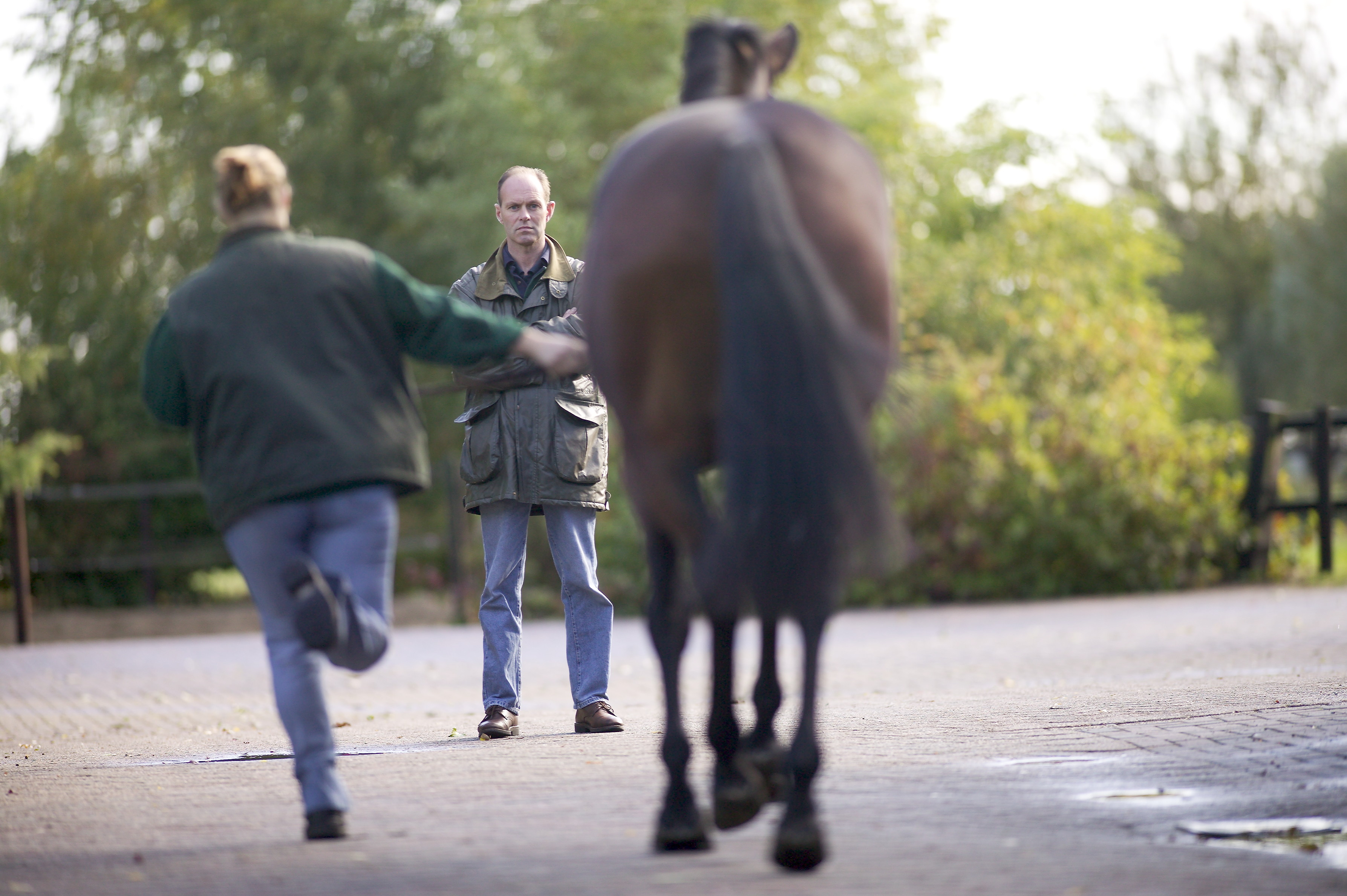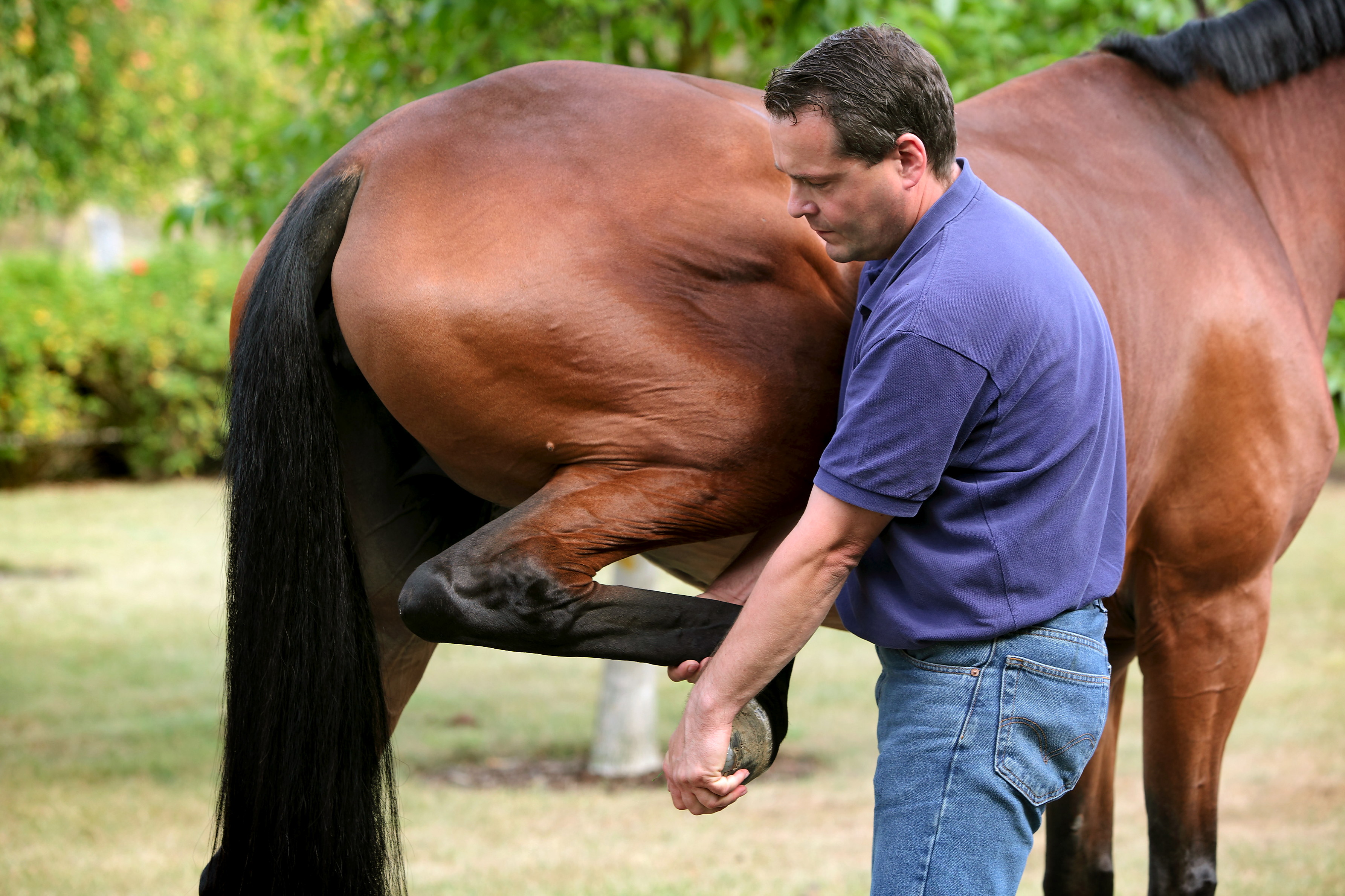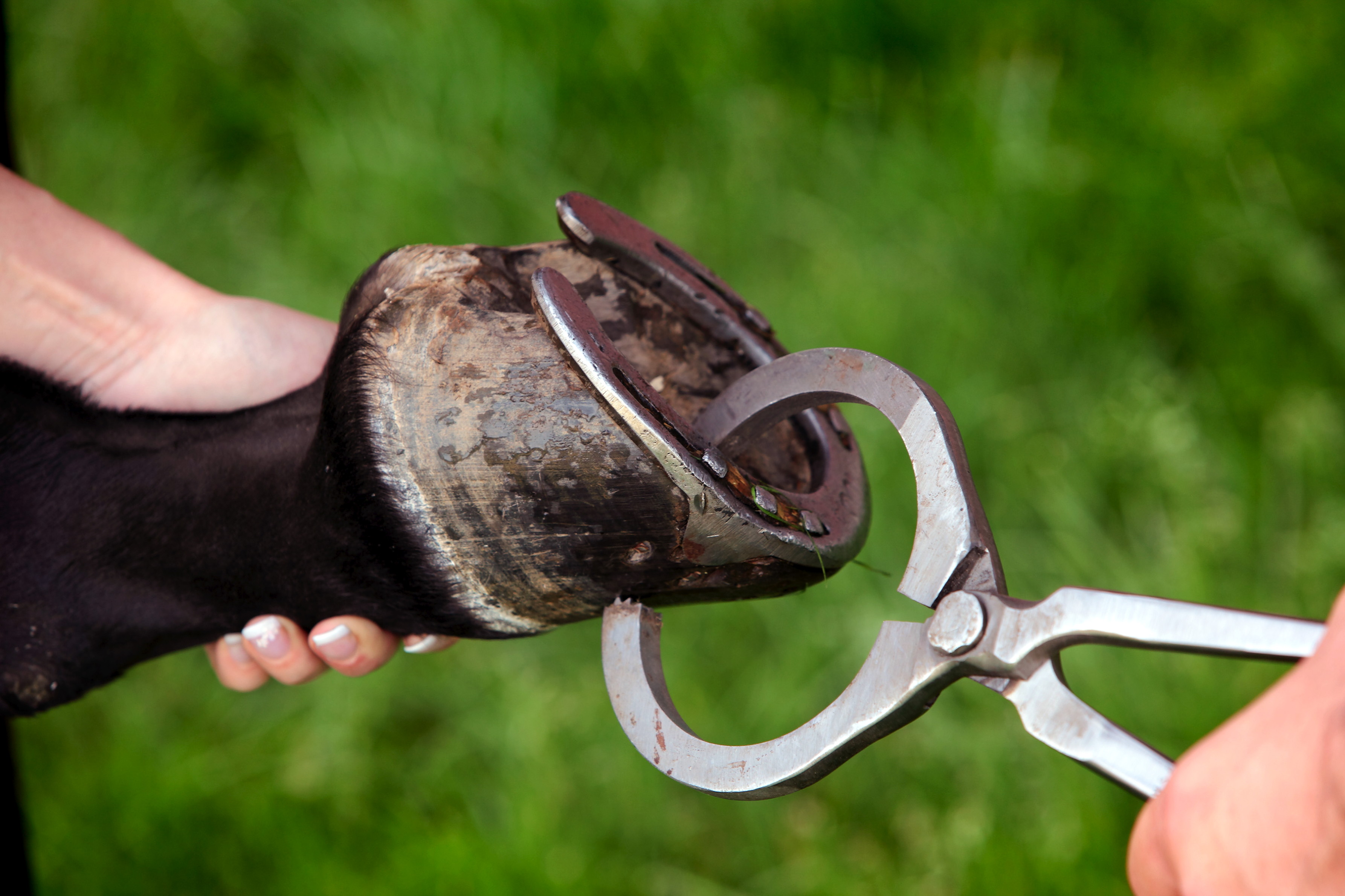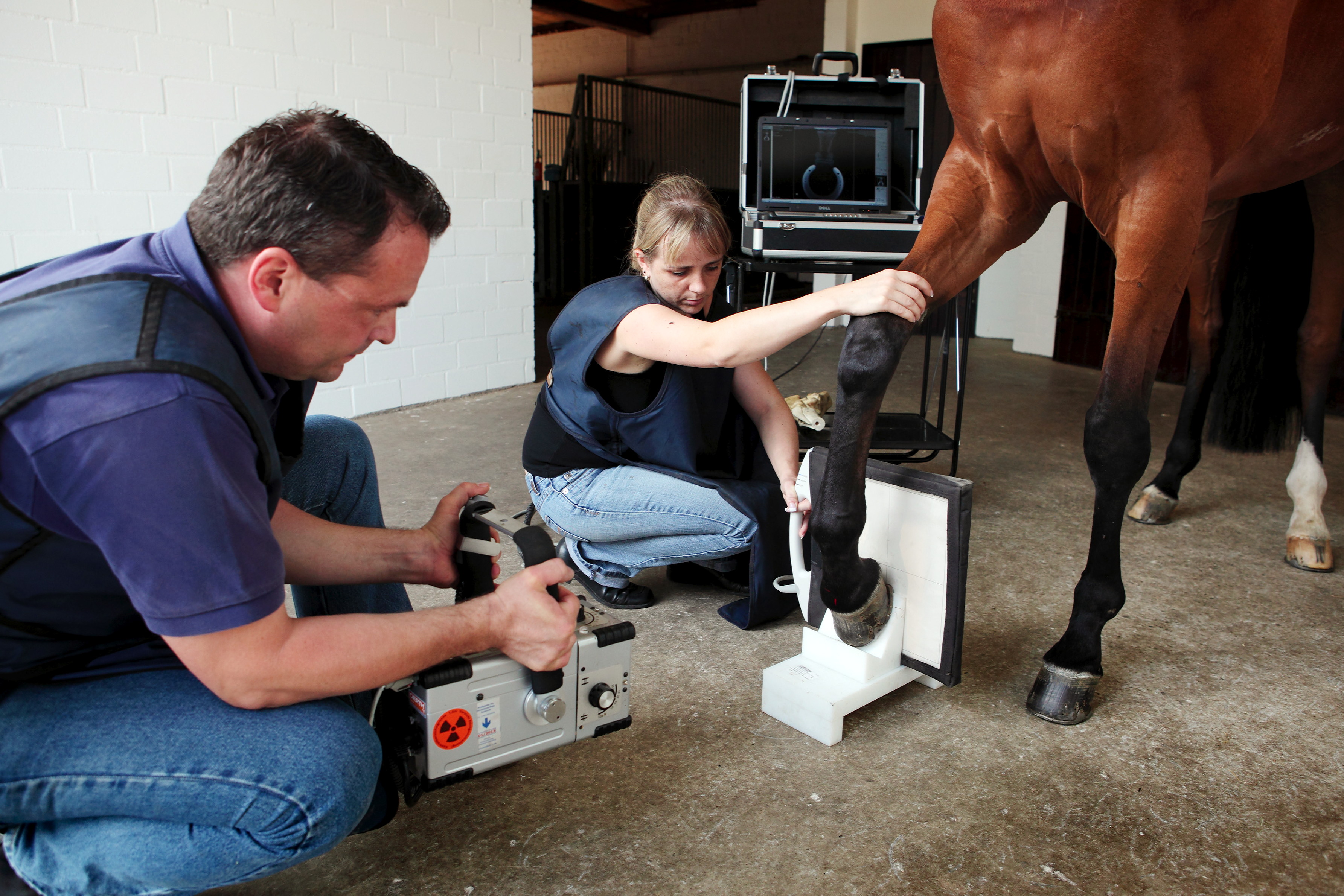
We’ve all heard the horse-buying horror stories. Shortly after bringing a new horse home, he comes up lame, displays a different (and unappealing) change in behavior or exhibits some other unforeseen health concern. In some cases, the timing is pure coincidence. In others, though, the problem is one that a skilled veterinarian could have uncovered sooner.
The lesson here? No matter how ideal that horse looks, before you finalize the sale, take one last step and have your veterinarian conduct a pre-purchase exam. After all, you’re about to hand over a significant amount of money, and you’re counting on taking home a horse who can help you realize your dreams. Now is not the time to skimp or rush. It’s the time to do everything you can to minimize risk and maximize the chances that what you think you’re buying is actually what you get.

The Value of an Exam
There are huge benefits to a pre-purchase exam, says Barb Crabbe, DVM, owner of the Pacific Crest Sporthorse veterinary practice in Oregon City, Oregon. “Rarely do we look at a horse in [this much] detail, even when we own them,” she says. “And once you have reached the pre-purchase point of looking at a horse, typically you are in love and really don’t want to hear about problems. So you have to count on someone else to keep you honest.”
Dr. Crabbe notes that while she conducts her own evaluation on a horse she’s interested in buying, she also has an outside veterinarian conduct a pre-purchase exam. “I think it is really important to get an objective, outside opinion,” she says.
Dr. Crabbe’s colleague at Pacific Crest, Lindsey Moneta, DVM, agrees on the value of a detailed pre-purchase exam. “As a buyer, you get a full physical assessment and a written report of the findings,” she says, adding that some buyers may even use those findings as a price negotiation tool.
Most importantly, she adds, the evaluation can identify concerns and help you make a fully informed decision based on the facts at hand. Does the horse have a heart murmur or a little arthritis in his hocks? Which lumps and bumps are normal? And what level of risk or management are you willing to accept?
See also: How important is conformation when buying a new horse?
Pre-Purchase Myths
Most people today understand that a pre-purchase exam isn’t a “pass or fail” test and doesn’t give you a crystal-ball view into the horse’s future, notes Dr. Crabbe. Yet those are important points to think about.
“The vet is not there to make a decision for you, only to tell you what she sees and what the potential problems might be,” she says. A pre-purchase exam presents only a snapshot of the horse on that day. Dr. Moneta adds, “As all horse owners know, a horse can be fine one day and be sick or injured the next.”
It’s just as important to keep any findings of the exam in perspective. Dr. Crabbe says she’s seen buyers pass on a horse due to one small issue when the horse would probably have been perfect for them. So be realistic as you go into this. Realize that, for instance, a Grand Prix dressage schoolmaster is going to have some wear and tear on his joints. And know that an eventer’s performance might not be affected by superficial bumps or an old, cold popped splint.

Lining Up the Players
A veterinarian, of course, plays a central role in a pre-purchase exam. But which one should you use? “The general recommendation is that a veterinarian perform the exam who is not the routine care vet for that horse,” says Dr. Moneta. “This avoids a bias that may be present and protects the buyer. If the horse is local and the buyer has a veterinarian she trusts, then that is the perfect situation.”
If the horse isn’t local, you can ask your regular veterinarian for referrals. Or get a list of options from the seller, and then ask your own vet’s assistance in researching those professionals. Some key questions to consider:
• Is the veterinarian a member of a credible professional association, such as the American Association of Equine Practitioners?
• Does the vet have digital radiography available so you can get higher quality images quickly?
• Will the vet talk with your regular vet to discuss findings?
• Does the vet have experience with the type of horse and/or discipline that interests you?
• What does the vet’s typical pre-purchase exam include and what is the cost range? (More on these in a moment.)
Three other people also play important roles during any pre-purchase exam:
• The seller. This person’s job is to provide the buyer and veterinarian with the horse’s medical history, agree Drs. Crabbe and Moneta. This should include records of vaccinations and deworming, any supplements or drugs the horse is currently taking and information on any previous medical issues, even if they’ve been treated and resolved. At Pacific Crest, the veterinarian conducting a pre-purchase exam will have the seller fill out a disclosure form for this information.
In addition, says Dr. Crabbe, “I prefer if the seller can be present during the examination. That saves a lot of anger or misunderstanding if problems do come up because they are able to see exactly what the problem is.”
• The buyer. Likewise, says Dr. Moneta, “If you are buying a horse, it is helpful to be present for the pre-purchase exam so you can discuss findings as they come up.” If the buyer can’t be present, the vet will call her before the exam to discuss concerns and intentions for the horse. And if anything unusual happens to occur during the exam, she’ll call the buyer before proceeding.
Whether present or not, the buyer needs to clearly explain to the vet her expectations for the horse. For instance, says Dr. Moneta, “Are they planning on buying their next grand prix jumper or a Steady Eddie trail horse that anyone can safely ride? Do they have any deal-breakers or anything they are particularly concerned about? Have they ridden the horse or had it on trial for any period of time and has anything in that time changed their feelings on the horse?”
• The buyer’s trainer. If the buyer is working with a trainer, that professional should already have helped the buyer evaluate whether the horse’s training and temperament are suitable for the person’s goals. During the exam, the trainer can help the buyer determine what issues she can live with. “For example, is the buyer a complete beginner where safety is number one? A small soundness issue might not be a big problem,” says Dr. Crabbe. “Is the buyer hoping to compete nationally or internationally? If so that is a different horse.”
In addition, a trainer can help her client decide whether, which and how many X-rays to take. These are areas, says Dr. Crabbe, that really fall outside the veterinarian’s job description and where the trainer can be particularly helpful to beginner horse owners.
In some situations, one more person may take part in the pre-purchase evaluation: a farrier. This professional may come into play if the veterinarian has specific concerns about a horse’s feet—perhaps an issue has shown up during the evaluation or the horse wears corrective shoes.
The Basic Exam
Now you know why it’s important to conduct a pre-purchase exam, and you have all the players in place. What happens next? Here’s an overview of the steps you can expect the veterinarian to take during a standard pre-purchase evaluation.
• Historical review. As mentioned earlier, your vet will want to review the horse’s medical records.
• Basic health check. This includes listening to the horse’s heart and lungs, checking his eyes, mouth, teeth and skin, and taking his temperature. The vet will palpate the horse’s abdomen and legs looking for potential red flags like heat or tenderness. In addition to a visual exam of the hooves and shoeing, the vet may use hoof testers to check for sensitivity or a reaction that might indicate bruising, heel pain or inflammation. Your vet will also consider the horse’s overall conformation and body condition and look for any signs of previous injuries or disease.
• Basic neurologic exam. Your vet will complete tests to check the horse’s reflexes, response to stimuli, sense of balance and coordination. She’ll also watch for abnormalities in posture and gait (such as stumbling), tremors, difficulty chewing or swallowing, and other signs of potential nervous-system difficulties.
See also: Diagnosing Neurologic Disorders
• Flexion test. In this step, the vet will test each of the horse’s limbs by flexing one or more joints (such as a knee and fetlock) and holding it in place for about 30 to 90 seconds. A handler then trots the horse off while the vet watches for signs of lameness. A long-used soundness test, it’s actually clouded with some controversy regarding its worth since results can vary depending on things like how a vet applies pressure to the joint. Take flexion results with a grain of salt and consider them in conjunction with other findings from the exam.
• Movement assessment. Another soundness check, this step has multiple phases. Dr. Moneta notes that it typically includes watching the horse move at walk and trot in a straight line on a hard surface, then longed in a circle at walk, trot and canter on a soft surface, such as a sand arena.
In general, your vet will watch for obvious signs of lameness, asymmetries or shortness in strides or body movement, and abnormalities in limb motion or footfalls. Your vet should also check the horse’s heart and lungs after exercise.
For a riding horse, Dr. Crabbe also recommends watching the horse under saddle. “A lot of things show up under saddle that don’t show up under other circumstances,” she says. For instance, you might see that the horse has trouble picking up one lead or exhibits respiratory distress.
See also: High-Tech Equine Lameness Detection
Extras and Add-Ons
Beyond these essential steps, radiographs (X-rays) are the most common add-on to a pre-purchase check. “I would recommend radiographs on any joint I have a question about because of the clinical exam,” says Dr. Crabbe. Beyond that, she adds, buyers may opt to have screening radiographs done. These may identify issues that haven’t yet become evident in other ways or can act as a baseline for future reference. The most frequent X-rays taken are of the hocks, fetlocks, knees, stifles and feet. “Neck and back are becoming more common, too,” says Dr. Crabbe.
Dr. Crabbe encourages buyers to have pre-purchase X-rays reviewed by a board-certified veterinary radiologist. “Cost is minimal—a couple hundred dollars—and even the most experienced performance-horse veterinarian isn’t going to see the same things that someone with that degree of training will see,” she says.
Dr. Moneta notes that their practice also offers every buyer the option of doing a drug screen—a blood test to check for the presence of drugs, such as anti-inflammatories or painkillers, that could mask temperament, soundness or other health issues. Beyond this, any additional tests will depend on any concerns raised during the exam or requested by the buyer. For instance, says Dr. Moneta, she might recommend a gastroscopy for a horse who has been treated for gastric ulcers but never had the diagnostic procedure performed. Or she might recommend an upper-airway endoscopy for a horse who exhibited respiratory noise during exercise. Other potential tests might include an ultrasound or nerve blocks.
Special Cases
Besides the circumstances mentioned, there are some other specific situations where you may want to consider additional tests or evaluations during a pre-purchase exam:
• Young horse (about 3 years old). Buyers often think that a horse who hasn’t been ridden yet or who has been worked only lightly shouldn’t have any bone or joint issues. However, Drs. Crabbe and Moneta recommend radiographs to check for developmental orthopedic disease if the horse is considered a performance prospect.
In addition, says Dr. Moneta, “I also pay special attention to the eruption of their incisor teeth to identify any abnormalities as [young horses] can sometimes retain their deciduous [baby] teeth and they may require extraction.”
• Senior horse (age 15 or older). For an older horse, you might consider blood tests to check for Cushing’s disease, particularly if the horse exhibits potential symptoms, such as a long hair coat in summer, poor muscle tone or a generally unthrifty look.
• Breed. Certain breeds have higher risk of specific genetic problems, and additional blood tests may help uncover issues that haven’t surfaced physically yet or that would be important if the horse were used for breeding. For instance, say Drs. Crabbe and Moneta, if you’re looking at a warmblood that you might someday want to breed, consider testing for Warmblood Fragile Foal Syndrome. It’s a fatal genetic defect related to connective tissue.
Is a pre-purchase exam worth it for you? In nearly every case, the answer is going to be a resounding yes. The investment you make in this evaluation can turn out to be priceless in terms of knowledge and peace of mind when you finally do sign that sales contract and bring your new horse home.

The Price Tag
The price of a basic pre-purchase exam will vary from one veterinary practice to another, but in general you can expect to pay from $250 to $500. It’s a good idea to ask the veterinarian the base cost up front.
While this might seem pricey for a “simple” evaluation, Dr. Crabbe notes that the exam itself typically takes at least two hours. The veterinarian may spend additional hours reviewing the horse’s medical history, assessing radiographs and potentially talking to other parties, such as the horse’s veterinarian or farrier.
Of course, the price can go up from there depending on additional tests that you request. For instance, Dr. Crabbe notes these average prices (which again will vary by practice and location):
• Four X-ray images of a single joint: $200
• Drug screening: $300–$500
• Gastroscopy: $300–$400
• Upper-airway endoscopy: $200–$300
It’s not uncommon, says Dr. Crabbe, for a pre-purchase exam to climb up to $3,000 to $4,000 when a buyer wants to minimize risk as much as possible on a pricey purchase. “Is it worth it?” she asks. “I paid over $3,000 for the last pre-purchase I had done for myself, so I would say I think it is and can put my money where my mouth is.”
Questions Every Buyer Needs to Ask
Along with the pre-purchase exam, Barb Crabbe, DVM, and Lindsey Moneta, DVM, recommend asking the seller these questions to help assess a horse’s suitability for your needs:
• Why are you selling the horse and how long have you had him?
• Are you willing to send the horse out on trial?
• Has the horse ever been lame or had a colic episode?
• Has the horse ever had a reaction to vaccines or other medications or shown signs of allergies?
• Does the horse have any vices, such as cribbing, weaving or stall walking?
• Has the horse ever exhibited any behavioral problems, such as bolting, bucking or trouble trailering?
• What is the horse’s current workload and experience?
This article was originally published in the Winter 2018 issue of Practical Horseman.








